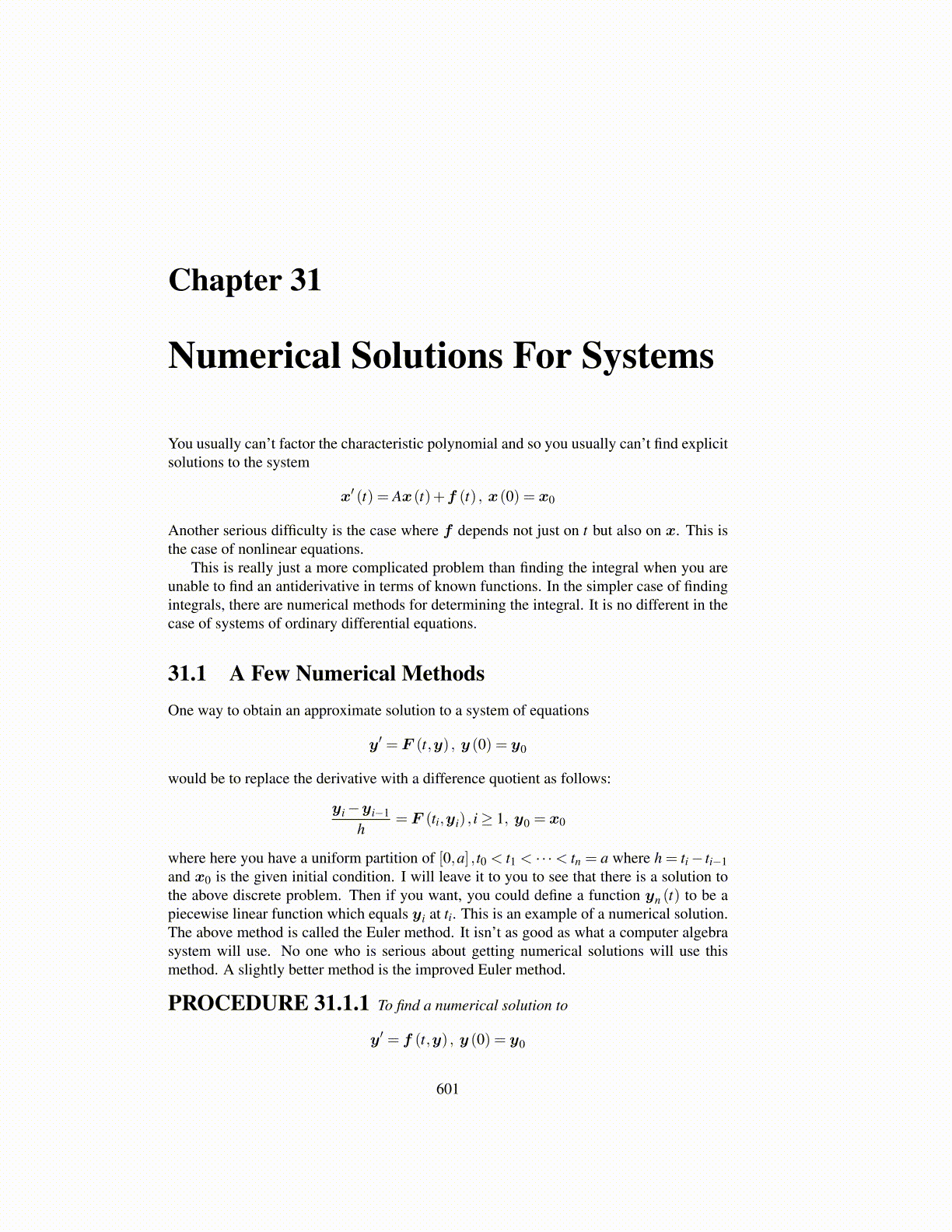
Chapter 31
Numerical Solutions For Systems
You usually can’t factor the characteristic polynomial and so you usually can’t find explicitsolutions to the system
x′ (t) = Ax(t)+f (t) , x(0) = x0
Another serious difficulty is the case where f depends not just on t but also on x. This isthe case of nonlinear equations.
This is really just a more complicated problem than finding the integral when you areunable to find an antiderivative in terms of known functions. In the simpler case of findingintegrals, there are numerical methods for determining the integral. It is no different in thecase of systems of ordinary differential equations.
31.1 A Few Numerical MethodsOne way to obtain an approximate solution to a system of equations
y′ = F (t,y) , y (0) = y0
would be to replace the derivative with a difference quotient as follows:
yi−yi−1
h= F (ti,yi) , i≥ 1, y0 = x0
where here you have a uniform partition of [0,a] , t0 < t1 < · · ·< tn = a where h = ti− ti−1and x0 is the given initial condition. I will leave it to you to see that there is a solution tothe above discrete problem. Then if you want, you could define a function yn (t) to be apiecewise linear function which equals yi at ti. This is an example of a numerical solution.The above method is called the Euler method. It isn’t as good as what a computer algebrasystem will use. No one who is serious about getting numerical solutions will use thismethod. A slightly better method is the improved Euler method.
PROCEDURE 31.1.1 To find a numerical solution to
y′ = f (t,y) , y (0) = y0
601